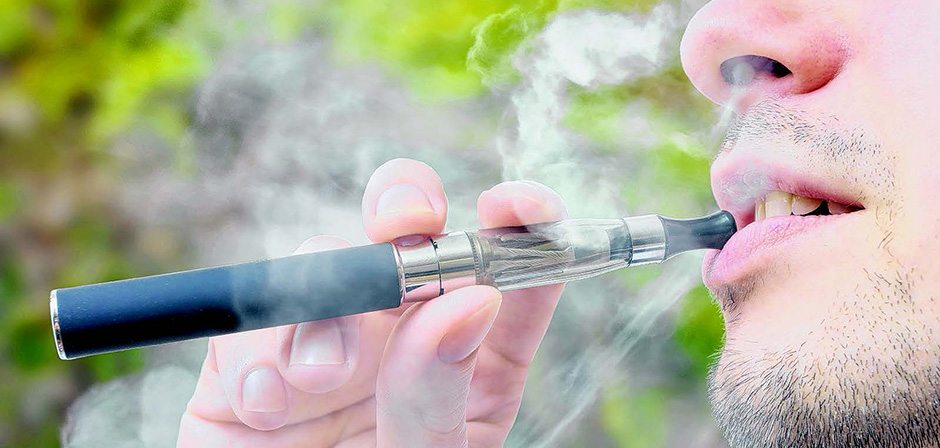
[This piece was written by Anne Lawton, RN, community liaison, St. Peter’s Cancer Care Center, who is also a facilitator of The Butt Stops Here tobacco cessation program.]
In 1964, the U.S. Surgeon General announced cigarette smoking was detrimental to human health, and should be addressed at a national level. At the time, half the adult population smoked tobacco. Today, the percentage of smokers in the U.S. is less than 20 percent of the adult population, and in New York state it is around 17 percent. Even better, today only 4 percent of American youth under 18 years of age smoke cigarettes. Kids these days are taught from a very early age that cigarettes are objectively unhealthy and indisputably bad for them. Think of it this way: what other product kills half of its users, if it is used exactly as directed?
It is clearly a positive development that less Americans are smoking, and that fewer young people take up the habit. Education and regulations are working. Unfortunately, tobacco companies in response developed and are gaining momentum with a new, youth-friendly product called Electronic Nicotine Delivery System (ENDS). These products are also referred to as e-cigarettes, vape, tanks, and vape pens. Some of the popular brands include blu and JUUL.
ENDS are sold at many retail stores and “smoke shops,” and are among the most popular products sold online. They come in multiple designs and in a host of flavors—ranging from bubble gum to bacon. Regretfully, we are hearing that many youth, college-age kids, and young adults believe ENDS are not dangerous, and are just flavored water vapor. This is not true.
ENDS are tobacco products and detrimental to a user’s health. The U.S. Food and Drug Administration (FDA) has very little regulation related to ENDS. Current regulations include that ENDS products must have a childproof cap, cannot be sold to anyone under age 18, and must state if they contain nicotine. However, the marketing, advertising, and packaging are not regulated by the FDA. There are no FDA regulations requiring ENDS products to disclose the amount of nicotine, or to include a complete list of ingredients. A typical ENDS product list of ingredients includes: nicotine, distilled water, propylene glycol, diacetyl, glycerin and artificial flavors. There are few studies on the safety of these ingredients when inhaled.
How does vaping work? Very simply, an energy source heats up a flavored, nicotine-infused liquid, which becomes a vapor and is inhaled by the user. The added flavors allow for less throat irritation and enable the user to take a deeper inhale, which leads to more toxins being deposited in their lungs.
ENDS are often packaged in a nifty little device that frequently resembles a flash drive or stylus. The lower-cost, refillable tanks are generally sized to fit easily in your hand. Using an ENDS product emits smoke that is easily missed, and which smells of the flavor being used. School-aged kids are using these products in school hallways, bathrooms, and classrooms—and are easily hiding this behavior. There is no dirty ash, no burn holes in clothing, and the smell is much harder to detect. There is, however, nicotine–the drug found in all tobacco products that causes tobacco addiction.
The amount of nicotine in ENDS products varies and is rarely indicated in understandable language on the packaging. Exposure to nicotine during the teen years, when a young person’s brain is still developing, can disrupt the brain circuits that control attention, learning, impulse control, and mood disorders, and can also increase the youth’s susceptibility to addiction. We know the effects of nicotine exposure on children and young people can be long-lasting. What we don’t know, however, because ENDS is still a relatively new product, are the long-term health effects of vaping on youth.
Thanks to the New York State Clean Indoor Act, the use of ENDS products is prohibited in public areas and in all the same places where smoking is not allowed. Despite these restrictions, ENDS use is growing.
This poses a challenge. How do we reign in the use of a wildly popular product that is already readily available online and in brick-and-mortar stores, and is generally incorrectly though to be safe?
Some ideas include an increase in education and community outreach, while others advocate increasing taxes on ENDS products to the same level as taxes on other tobacco products. Other ideas include restricting online sales, regulating the flavors, and raising the minimum age to buy ENDS to 21.
For more information, please visit this article by the U.S. Centers for Disease Control and Prevention (CDC): E-Cigarettes and Young People: A Public Health Concern





